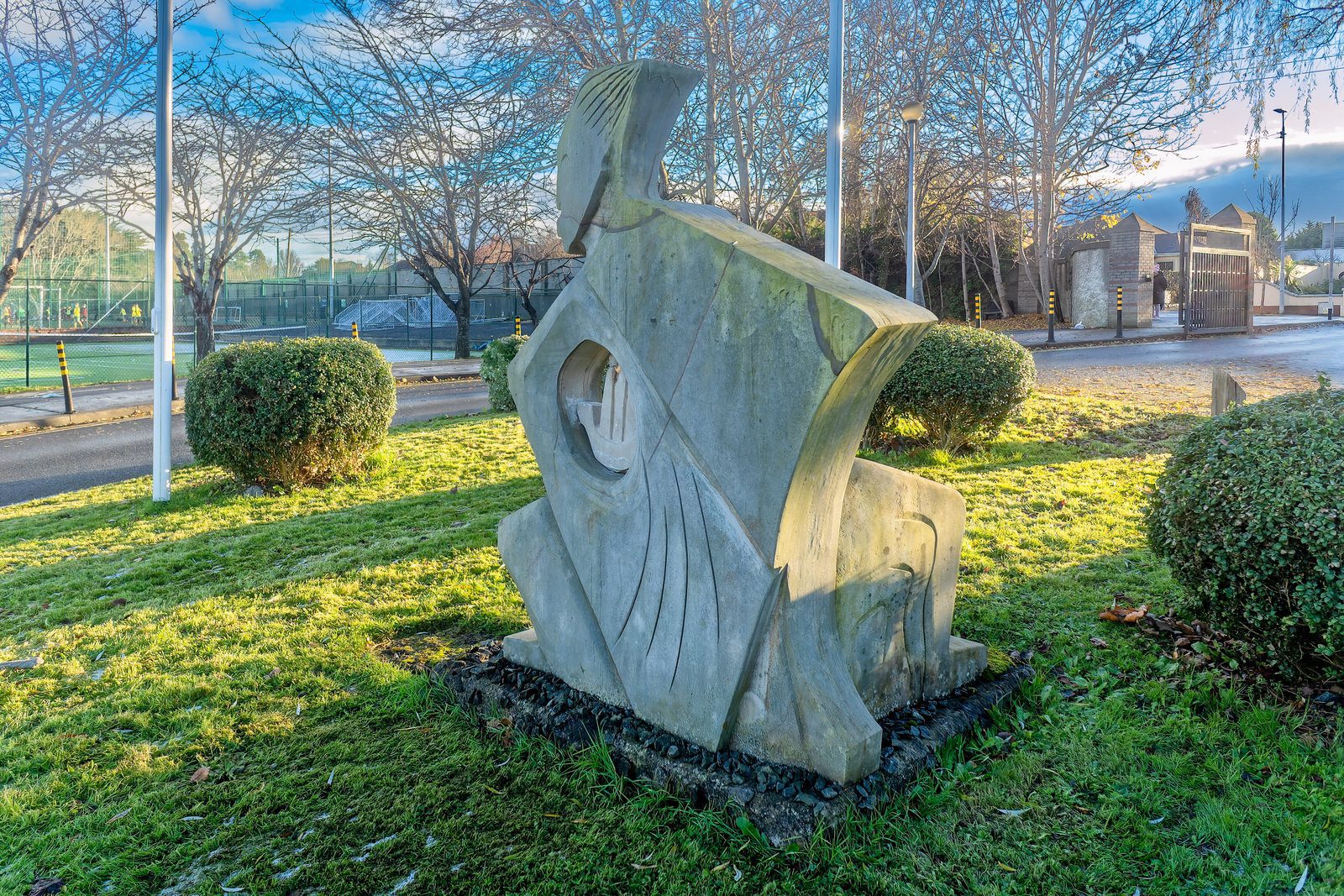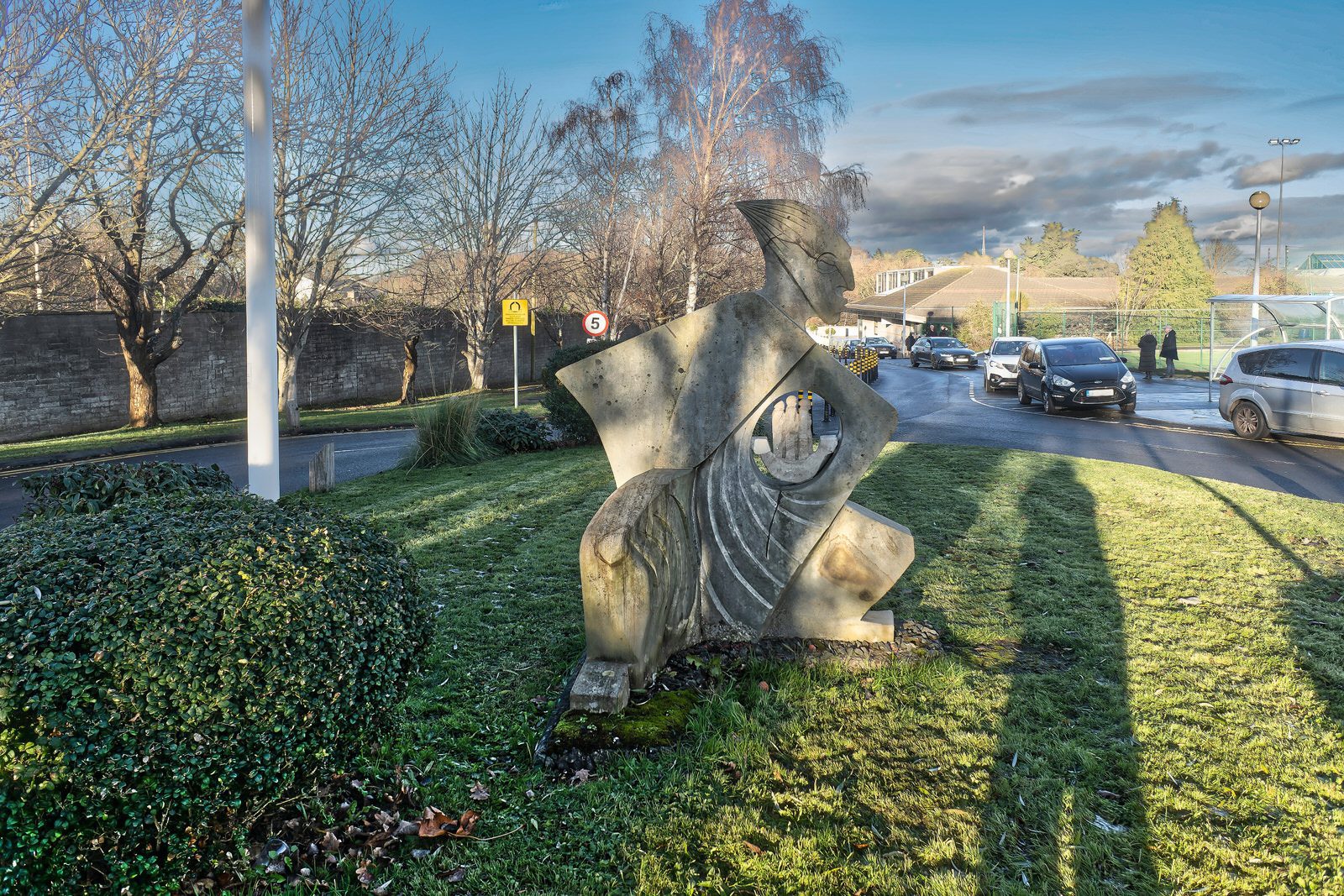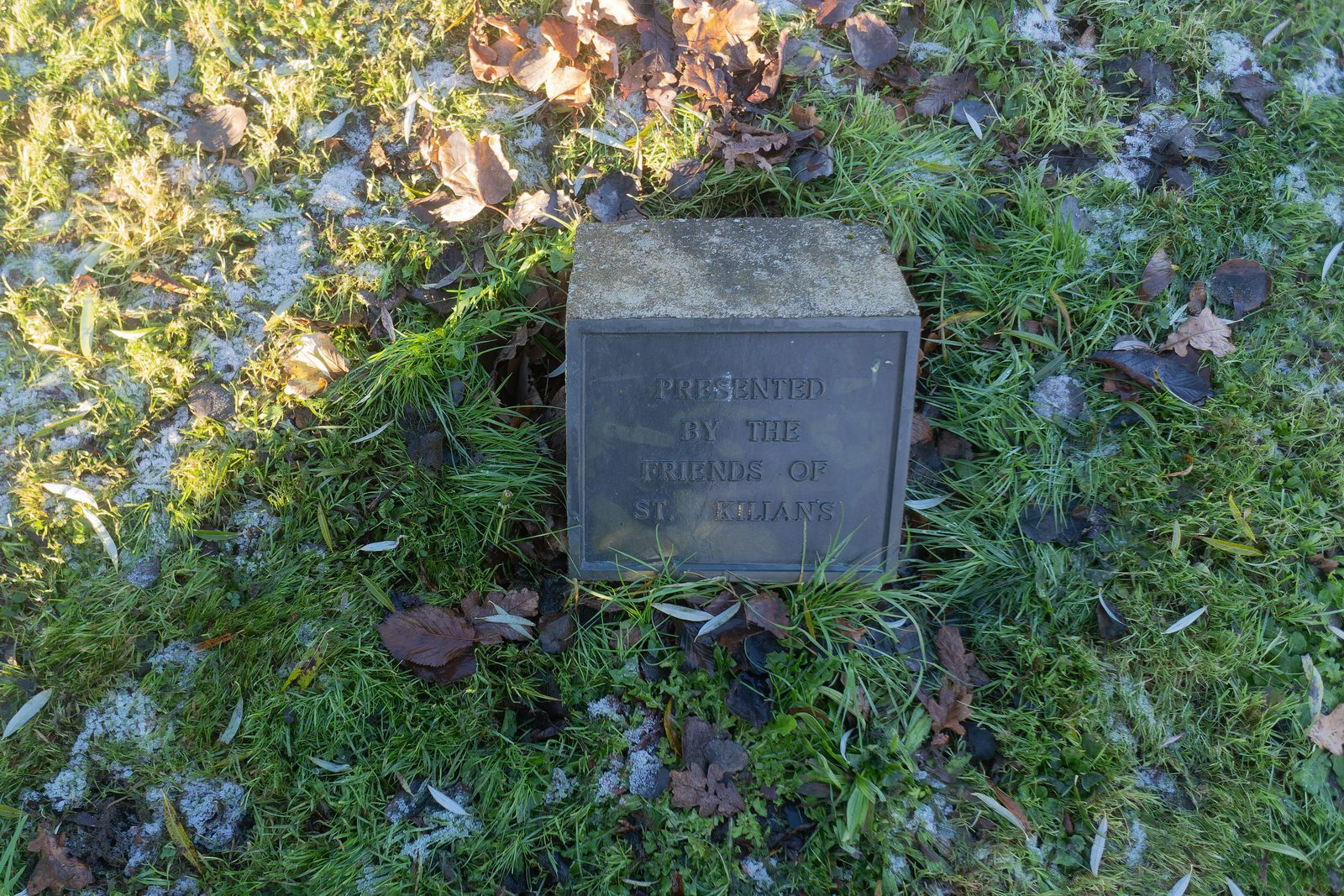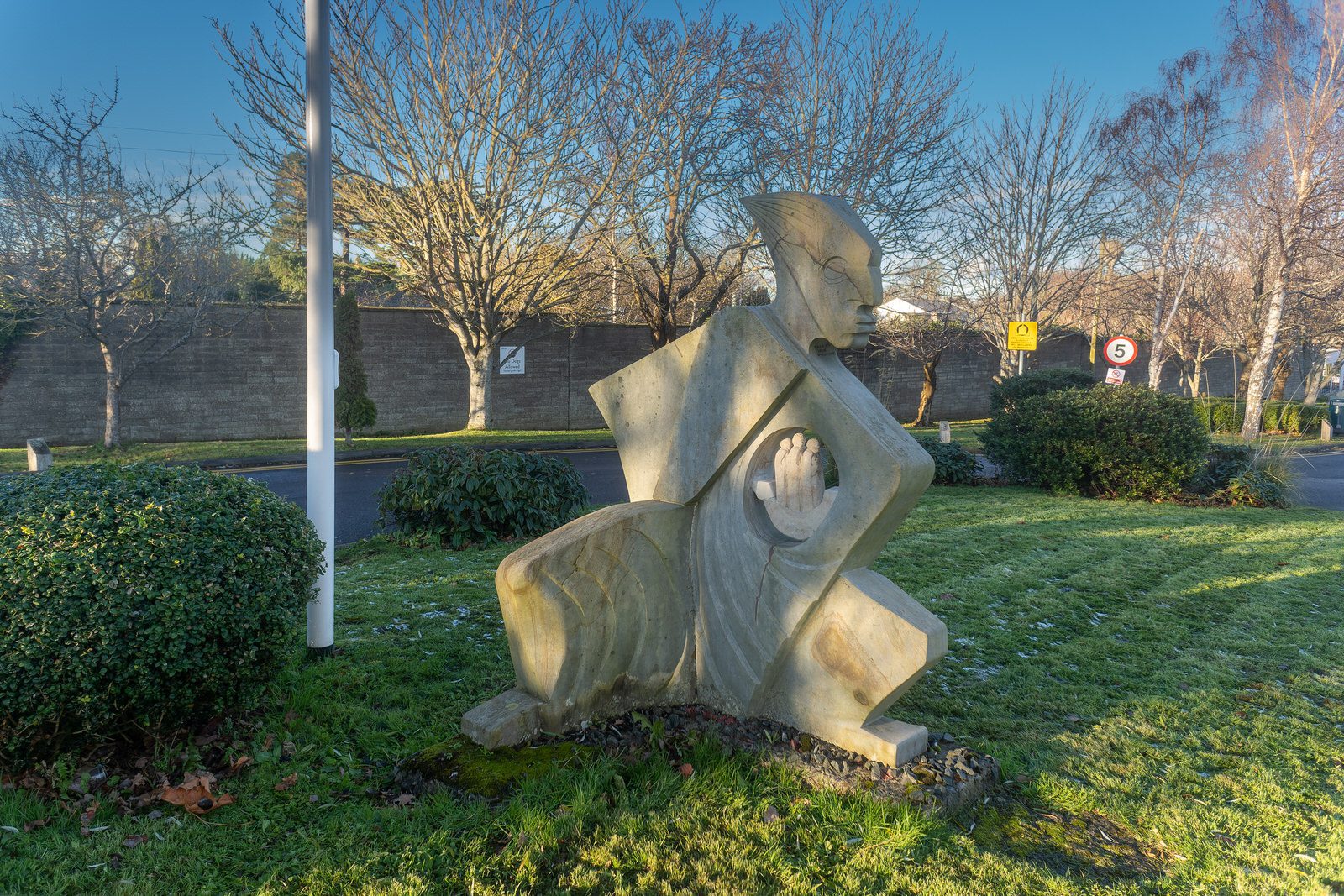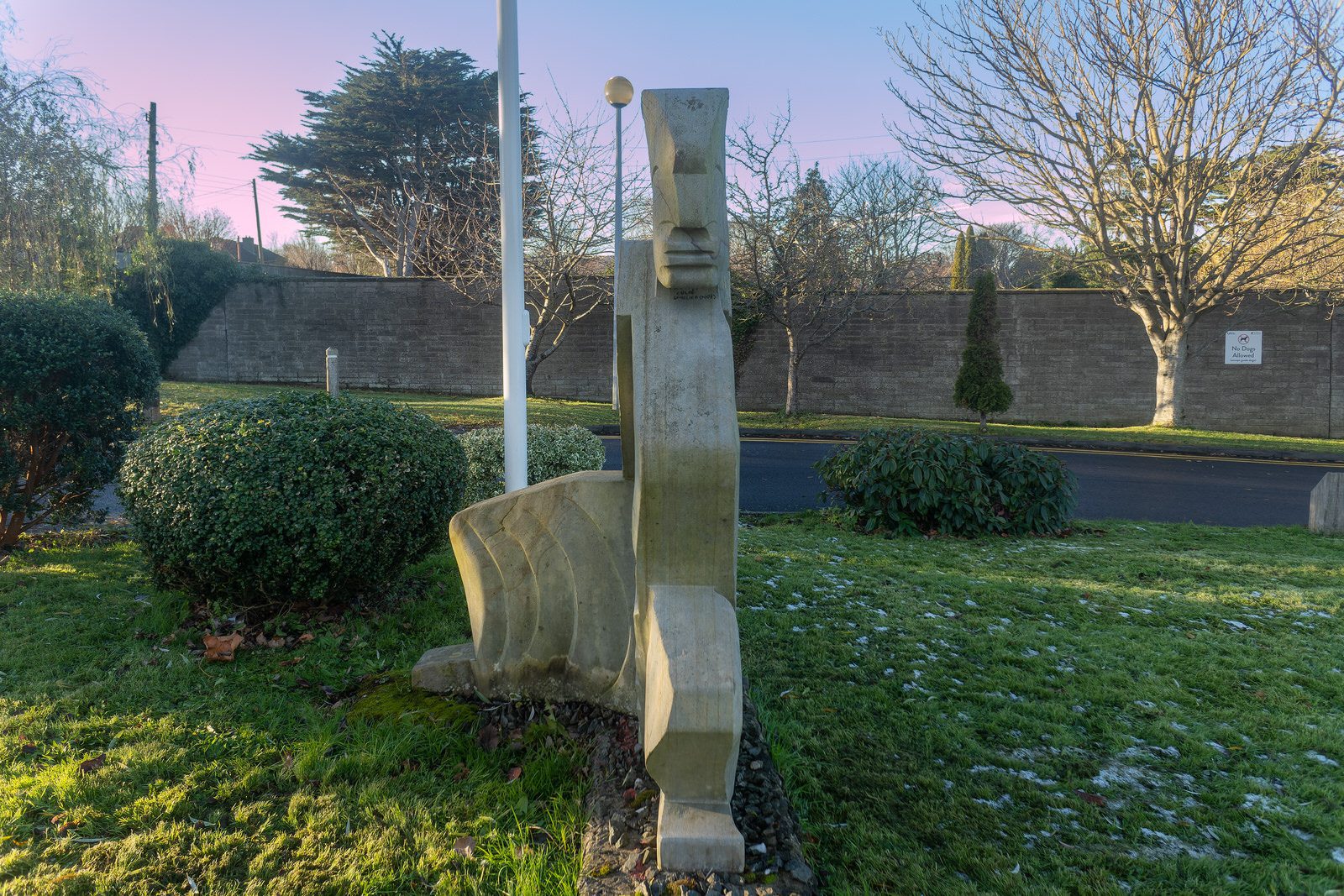THE GERMAN SCHOOL ON ROEBUCK ROAD IN DUBLIN
I am in the area about twice a week but, unusally, I had the time to photograph the area today.
St Kilian’s German School (Deutsche Schule Dublin – DSD) is an independent German international school in Dublin, Ireland.
St Kilian’s was founded in the early 1950s, developing from the work of a Dublin charity, the Save the German Children Society, founded in 1945.
Since 2002, St Kilian’s has shared sites with Lycée Française d’Irlande, the combined campus known as the “Eurocampus”.
The secondary school has a typical rate of progression to third-level of 90-100%.
Kilian, also spelled Killian, was an Irish missionary bishop and the Apostle of Franconia (Franconia is nowadays the northern part of Bavaria), where he began his labours in the latter half of the 7th century. His feast day is 8 July.
The Kiliani-Volksfest, which runs for two weeks every July, is the main civil and religious festival in the region around Würzburg, Germany.
St Killian’s College, Garron Tower, Northern Ireland is named for him. Also, St. Kilian’s Heritage Centre, located in the village of Mullagh in County Cavan. It was opened in 1995 by the then President of Ireland, Mary Robinson. Built by the local community in association with the Diocese of Würzburg in southern Germany, the Heritage Centre features many relics and replicas of the saint. The German School in Dublin, Ireland, is named after St. Kilian as a tribute to the early exchange of education between the two countries of Ireland and Germany.
There are religious buildings which bear his name as well: St. Kilian’s Abbey, Würzburg and St. Kilian’s Church, Heilbronn are two such places. Also there is a basic school in Ghana named after him and also a parish church in Mission Viejo, California. Also a parish in Farmingdale, New York.
The Save the German Children Society (SGCS) was founded on 16 October 1945 at a meeting in Shelbourne Hall, Dublin, to find foster homes for German children in Ireland. The president was Kathleen Farrell (née Murphy), a paediatrician at whose house Charlie Kerins had been arrested in 1944. Dan Breen was treasurer. A Garda Special Branch attendee reported some speakers favoured assisting Germany from anti-British sentiment. Hermann Görtz, a convicted German spy, became secretary of the SGCS on his release from prison. The SGCS proposed to house Catholic and Protestant children with families of the same denomination, and not to take Jewish children, who it feared would not integrate. Harry Bodkin became vice president of SGCS in 1948 but was dissatisfied with its preference for Catholic children. Sidney Czira and Eamon Kelly were also members.
The SGCS secured hundreds of volunteer families, 90% Catholic. It had contact with religious charities in the British Zone and approached the Irish government about transporting children from there via Great Britain. The centenary of the Great Irish Famine was a motivator for the Fianna Fáil government to assist Europe in general in the post-war hardship, but it agreed with the British government that the SGCS was an unsuitable organisation and refused to permit immigration under its auspices. The SGCS applied to the Allied Control Council and the United Nations Relief and Rehabilitation Administration but was advised to use the Irish Red Cross to arrange for migration.
The Irish Red Cross had by 14 February 1946 received 100 French children as refugees, and government efforts were ongoing to secure Polish refugee children.
In Spring 1946, the British authorities agreed to allow children to leave Germany. The Irish government agreed to host some for three years, after which they would be sent back to relatives in Germany. German Catholic charity Caritas had by May selected 100 children aged between 5 and 14, predominantly from the Ruhr area of North Rhine Westphalia. They were put in the care of the Irish Red Cross. The first 88 children arrived in Dún Laoghaire on 27 July 1946.
The initial reception centre was St. Kevin’s Hostel at Glencree, County Wicklow, a former reformatory school owned by the Minister for Supplies. There Daughters of Charity of Saint Vincent de Paul nuns provided treatment for transmissible diseases and malnutrition.The Red Cross then liaised with the SGCS to place the children in the homes found by the SGCS. Some children were removed from abusive homes, while most adapted quickly, learning English and sometimes forgetting their German.
Between 1 January 1946 and 25 June 1947, 1000 aliens were registered under the Aliens Act 1935 as having immigrated to Ireland, of whom 462 were children; 421 of those were German, all but 18 of whom came via the Red Cross. Some were orphans but others had parents incapable of caring for them, for reasons such as internment as POWs, homelessness, or illness. In 1949, when the time came to return to Germany, many children did not wish to do so. Where host and German families were both willing, the SGCS applied to the government to allow the children to stay in Ireland. Against the wishes of the Red Cross, about fifty did so.
